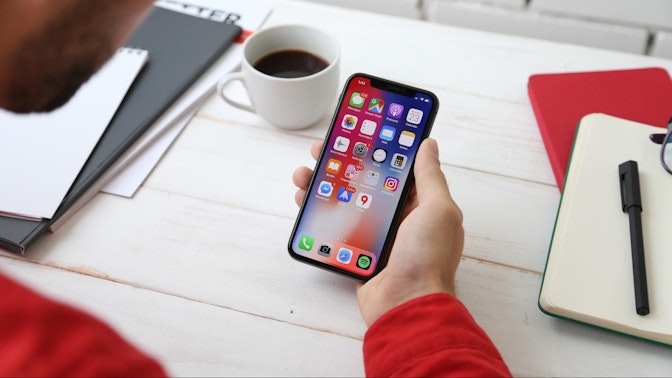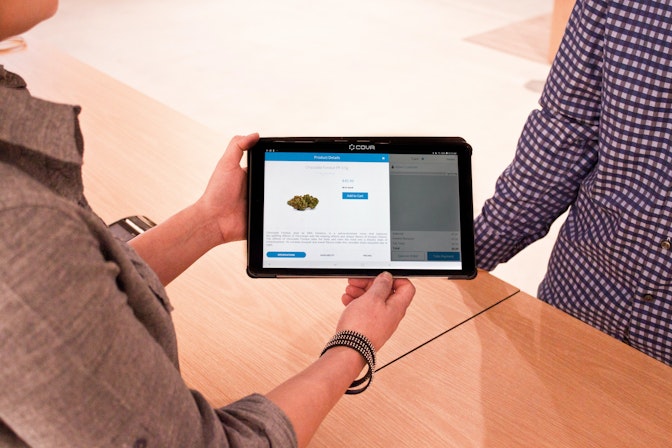Sure, success is cool, inspiring, and all that, but what about failures? Sometimes it’s nice to know you’re not alone in fumbling through the process of starting a business.
And it’s not just newbies who make mistakes. Dig deep enough and you’ll find that behind the fast cars, fancy watches, and got-it-all-under-control attitudes of the most successful store owners, you’ll find a few f***ups lurking.
And today, they’re opening up. We’ve asked 18 successful dropshippers to spill on their most memorable facepalm moments. From thousands spent on Facebook ads with the wrong link to hair-pulling issues with suppliers, you’ll hear their dropshipping failures, as well as their advice for how you can avoid following in their footsteps.
Post Contents
- Beer + Facebook Ads = 😬
- Don’t Box Yourself Into a Niche
- Sometimes… Don’t Trust Your Gut Instinct
- A Scary Shipping Mistake
- Wait, Where’s the Influence?
- Sales Go Up, Money Goes Down?
- The Missing Link Between Success and Failure
- Invest in Quality… Or Else
- Have You Double Checked the Address?
- Turn That Customer’s Frown… Into an Opportunity
- A Pricing F***up, Multiplied
- Make Sure You (Actually) Get Paid for Your First Sale
- What is the Facebook Data Really Telling You?
- Don’t Try and Manage Stock Levels Yourself
- Make Sure Your Supplier Can Scale With You
- Thousands of Clicks Later…
- Heads Up! Chinese New Year Is Coming.
- Too Much of a Good Thing on Holiday
- Wrapping Things Up
- Want to Learn More?



Beer + Facebook Ads = 😬

These days, Chris Wane is a seasoned expert with Facebook ads. But back when he was just starting out, overconfidence plus alcohol (“the cause and solution to all life’s problems”), combined to make one very memorable f***up. Here’s what happened.
→ Click Here to Launch Your Online Business with Shopify
Not long after I’d started making a decent amount of profit, but before I really truly understood Facebook ads completely, I decided to launch a brand new product first thing on a Saturday morning. I had 50x £50 a day ad sets, so I was spending a total of £2,500 per day in a test phase. Idiot!
My thought behind it was, “I know what I’m doing now, this product will be a winner. I just need to spend more and I will make more.” How wrong I was…
To make matters worse, I was going on an all day bender for a friend’s birthday so my plan was just check into it every now and then just to make sure it was going well and if it wasn’t then I would just turn off the ad sets, no biggie!
Problem was that I got so carried away with the day (there was lots of beer), that I completely forgot to check my ads. The next day, when I woke up hungover and realized that I hadn’t checked the account I felt sick.
In total I had spent over £3,100 on ads and I had only made 10 sales… a loss over £2,900.
I quickly learnt that spending more doesn’t always equate to earning more. Luckily I had other products that were profitable but it still stung, a lot!
Moral of the story: don’t launch expensive campaigns if you’re going out drinking.
Don’t Box Yourself Into a Niche

Nowadays, Harry Coleman’s success is so legendary he calls himself the Beast of Ecom. But when he started out, he found himself in a situation that so many newbie dropshippers do. Here’s what happened and how he found his way out.
My biggest dropshipping fail was around my first store that I ever got up and running. It was a very niche store – I was selling nail products, and it was a completely pink website. I was really boxed in with the kind of products that I could sell. So I spent $800 on ads, and only got one sale. But it was so niche that I couldn’t test other products that were seen as winning products. So I shut it down and started up a general store.
So what I learned from that is that if I’m just getting up and running with things, I’ll always go down the route of a general store. This means I’m not limited to the products that I can test, rather than being boxed into a niche store that only sells a certain kind of product.
Sometimes… Don’t Trust Your Gut Instinct

Like so many successful entrepreneurs, Yuanda Wang is a very logical guy. He approaches his business with rational thoughts, carefully assessing the data before making a decision. But he wasn’t always like this. He had to learn the hard way that sometimes your instincts just aren’t right.
My most memorable dropshipping f***up came from being too greedy and not following the numbers. I decided to do an influencer post with a large meme page, even though their numbers were indicating that it wouldn’t be profitable. The account had a ton of followers, I believe it was around 10 million. They charged me $1,500 for a post and it only made $800 in gross revenue. That meant I lost a lot of money after counting the cost of goods sold (COGS) and all my fees.
I learned that you shouldn’t rely on intuition for business, you should always listen to the data. If the numbers line up, then go for the idea, whether it be a shoutout or even deciding to sell a product. Your gut intuition feeling may help you in other situations, but in business situations it will cost you money.
A Scary Shipping Mistake

For her first store, dropshipping newbie Allanah decided to capitalize on the spooky season with a Halloween store. She was still buzzing from the high of her first sale, when a customer messaged her asking about a ring she’d seen advertised. The next thing that happened is where the real scary stuff starts.
I had posted the ring on Instagram with a discount code and could see that it was getting traffic but no sales. I was frustrated but figured people were just curious and then clicking away. Then I received this message from a customer in the US who said she had issues with ordering.
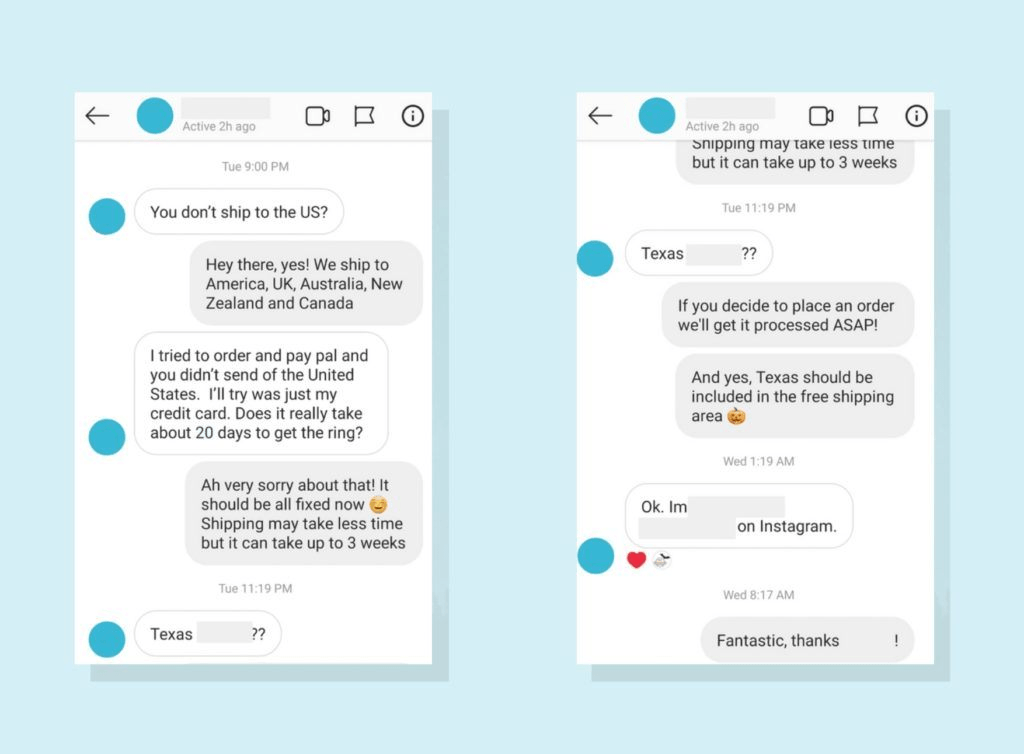
I realized that when I was building my store, I had set up a new shipping profile to establish free shipping to the US, UK, Canada, Australia, and New Zealand. At this point in time I had imported some products to my store, but not all. So, while the existing products in my store were added to this shipping profile, any new products I imported – such as the ring – went into the general profile.
And, stupidly, I hadn’t set up any rates for the general profile so it assumed we didn’t ship those products anywhere.
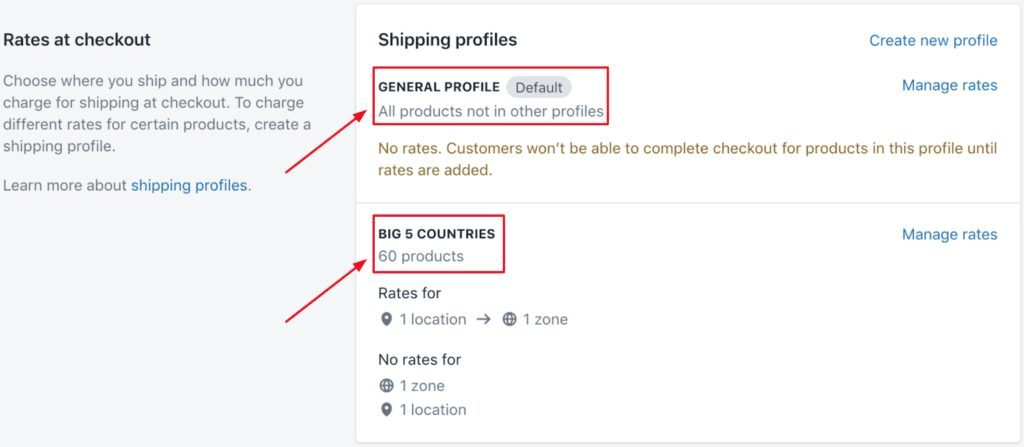
This meant potential buyers could add the item to cart and fill in their information, including choosing which of the five countries they wanted to ship to. However, in the next step – the shipping section – they were told shipping wasn’t offered.
I fixed the problem and relayed the information to the Instagram user, who then placed an order. Obviously, it was good to get the sale, but it was still frustrating to realize this mistake went totally unnoticed until she had contacted me. After all, how often do you contact a website owner if you notice a mistake on their store? Basically never.
| Pro Tip: Avoid this facepalm moment and find out how to set up your shipping profiles correctly. |
Wait, Where’s the Influence?

When friends Marc and Noah first heard about influencer marketing, it seemed like a straightforward and effective way to get their products in front of more people. But when they started working with influencers, they stumbled into a f***up that quickly taught them a hard lesson.
We saw that many dropshippers were using influencers for shoutouts or product ads, and since apparently it worked for others, we thought why not give it a try?
So we tried a few collaborations with influencers in several different niches, most of them with around 50k – 150k followers. We paid between €100 – €300 per post, but none of them worked. To put this in perspective, our Return on Ad Spend (ROAS) with influencers was generally around 0.7 – 1.3, whereas with our own Instagram branding and Facebook ads, we always have a ROAS that’s 1.5 to 2.7.
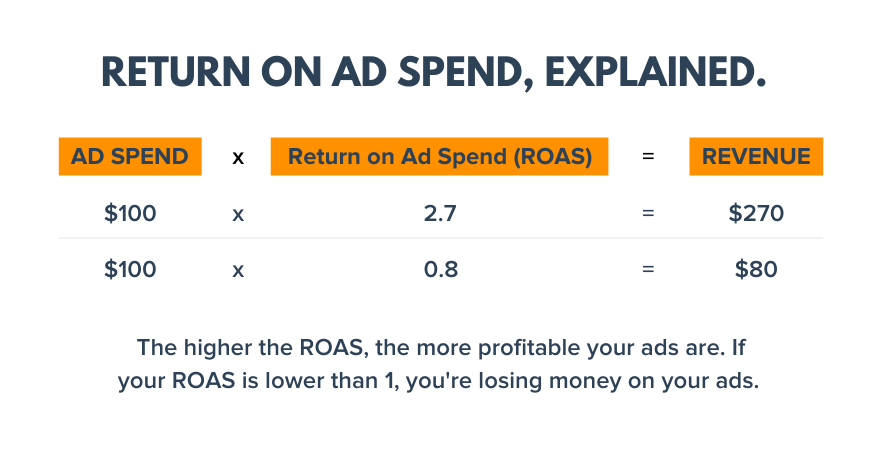
Our experience showed that influencers aren’t worth it for dropshippers, unless you have an established brand and want to grow even further. Influencers are much better at promoting stuff that already works and just widen the spectrum of targeting possibilities. But be ready to spend some big sums on Influencers with more risk than Facebook ads.
Sales Go Up, Money Goes Down?

Nowadays, Yuliya and Mike are the owners of a seven-figure ecommerce business. But at the beginning, they were moments away from quitting and facing an uphill battle to reclaim the profitability of their business. They take us back to what happened.
Our biggest dropshipping fail was flying blindly for the first six months of the business and not knowing how much money we were making. We were just roughly calculating our profit in our minds thinking we’re making money, but then we’d look in our bank accounts and be like, “Where is it?”
We were spending so much on ads, and trying to spend our way out of the problem until we couldn’t afford to go on. I remember saying to each other, “Any sane person would quit right now.” We were hustling 24/7. We were literally trying the same things over and over again, and nothing was working. We started trying different strategies, and eventually made it work with our backs pinned against the wall.
I wish this was a lesson that we learned a lot quicker because it was very slow, painful fail. But once we really figured everything out, we were able to scale massively and profitably, which is the most important thing. Profit first.
The Missing Link Between Success and Failure
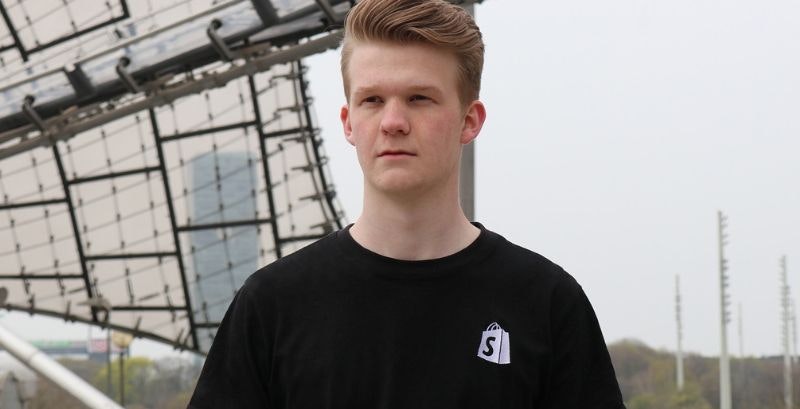
Teenage dropshipper Christoph Filgertshofer’s f***up was recent enough to still feel painful. His story shows how sometimes the smallest details can lead to big, big problems. Let’s take a closer look.
My biggest f***up was a couple months ago. I had set up a huge Facebook marketing campaign for a product relaunch. I had tested the product before, and I knew the product and ads for it would work. So, I set everything up and started with a daily budget €1,000 on a Saturday.
I was super excited to see the first sales coming in after the ads were approved, but nothing happened. I checked the store for any bugs, but I couldn’t find any. Fast-forward 24 hours, I had to turn off the ads. I hadn’t made any sales and I had already wasted €1,000.
Next day I talked to my team about the failed relaunch and we found the problem… I had used an old link for the product that was no longer live, meaning everyone was getting sent to a link that didn’t work.
Invest in Quality… Or Else

When you’re starting off and haven’t got much budget to play with, it can be tempting to choose the lowest-cost product available from suppliers. But like Marcelo learned, this can come back to bite you.
My first f***up was to select a supplier whose quality was not very good, which caused me a lot of complaints and returns. I refunded any customers that complained, which took a big part of my profit, plus I wasn’t feeling proud of what I was selling.
My second supplier’s product quality was much better than the first one, and I realized the difference between the quality of the same product from different suppliers can be huge. I compared the same item from both suppliers and there was a clear difference between the two items. My advice is to be sure to get the best quality for a reasonable price. Now, with my new supplier refunds have decreased, and I feel proud of what I sell.
Have You Double Checked the Address?

Sometimes the smallest mistakes can turn into the biggest headaches. After a tiny mistake during the order process, beauty dropshipper Sarah found herself in an f***up that kept on unfolding. Here’s her story.
When I was selling wigs, the supplier I was using didn’t ship to my customer’s country. So after some back and forth, the customer and I agreed that I would ship the item to myself, then ship it over to her. The whole process would take 30 days.
I’m not sure how I missed it, but instead of sending the package to myself, I sent it to another customer who had previously ordered. Their address was auto-populated and I didn’t realize until after the order had been shipped. I tried calling the post office, and sent over five emails to that old customer explaining the situation and offering a discount code if they could resend the item. But I got no response after two weeks of trying. So I ended up having to apologize to the customer who was still waiting, re-order the wig, send it to myself and then pay extra to get it express shipped to my customer. The biggest takeaway from this experience: always double check that you are inputting the right information before processing your orders – it’ll save you money.
Turn That Customer’s Frown… Into an Opportunity
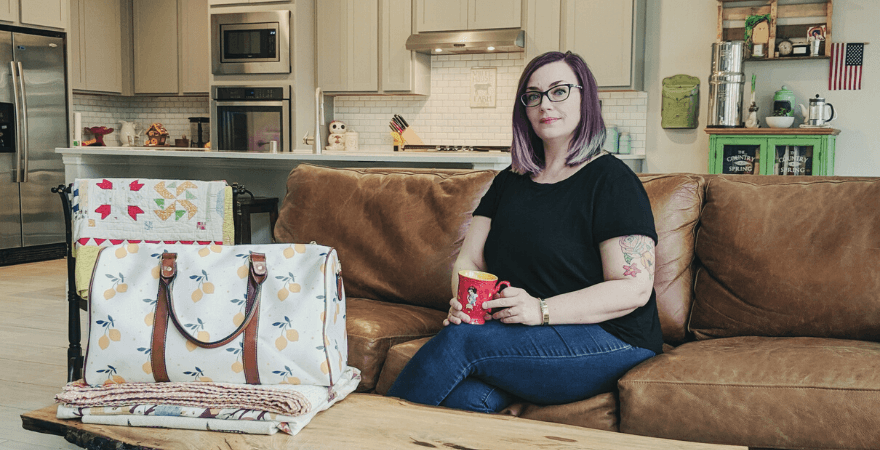
When Courtney White, the owner of babywear store Finer and Dandy, started, she was so busy building her website, researching products, and finding suppliers, that she hadn’t taken a moment to consider how she’d handle customer service. Then, she came face-to-face with an f***up that forced her to make a decision that would impact the future of business.
At the beginning, I spent months researching, contacting suppliers, ordering and testing products, and trying to be thoughtful about the selection of items I was going to sell. After settling on a couple of reliable suppliers, what started out being great service and fast delivery suddenly shifted when some of my customers began contacting me about pacifier clips that hadn’t arrived.
When one of my customers (Adrienne Jennings from @thejenningsgirls) started asking where her pacifier clip was, my first instinct was to just get her out of the way as quickly as I could by giving her a refund so I could move on to doing other things.
That was a pivotal moment for me when I realized that my customer service was going to be the core identity of my shop and was the key thing that would give me a huge advantage over my competition. Rather than get rid of the issue as quickly as I could, I offered to send her some free products and refund her for the pacifier clip (which did eventually end up getting delivered). She loved the items I sent and asked me to partner with her for a giveaway on Instagram. Adrienne’s Instagram page is an influential one in the baby space and this collaboration gave me a nice bump in followers and engagement.
What could have turned into an angry customer became my most passionate shop advocate and Adrienne is now my most trusted partner as the stylist and digital content creator behind the brand and Instagram page.
Not putting my customers first was the biggest mistake I made in the beginning, thankfully the cost of those refunds and free products was only $63 but the lesson learned was priceless. I’ve continued to adopt the same approach I used with that pacifier clip with every customer interaction. I now have a very bespoke style of customer service that is focused on making meaningful connections, which has evolved to become the entire core of the brand identity. I’m forever grateful for that missing pacifier clip and what that experience did to help elevate the brand and how I approach my business now.
A Pricing F***up, Multiplied

When Mike Marino from our Social Care team set out to test if he could turn a profit by spending $10 a day on Facebook ads, his experiment lead to a spectacularly memorable f***up that had nothing to do with ads, and a lot to do with… pricing multipliers?! Here’s what happened.
When a product is out of stock on AliExpress, their platform will sometimes set the price of the product to zero before restocking the item on their system. It’s just one of those AliExpress quirks.

With global pricing rules in this scenario, a product that costs $3 would then cost $9 at your store. But as I learned, and learned the hard way, is that if a product momentarily goes out of stock on AliExpress, it can make the multiplier screwy by resetting the cost to $0. After all, $0 x 3 is… 0.
This happened to me and caused an influx of completely free orders! Not ideal. This was my biggest facepalm moment, no doubt.
To avoid this, what you need to do is set your price and then select “Do Nothing” in your Auto Update settings, otherwise you might be giving products away for free.
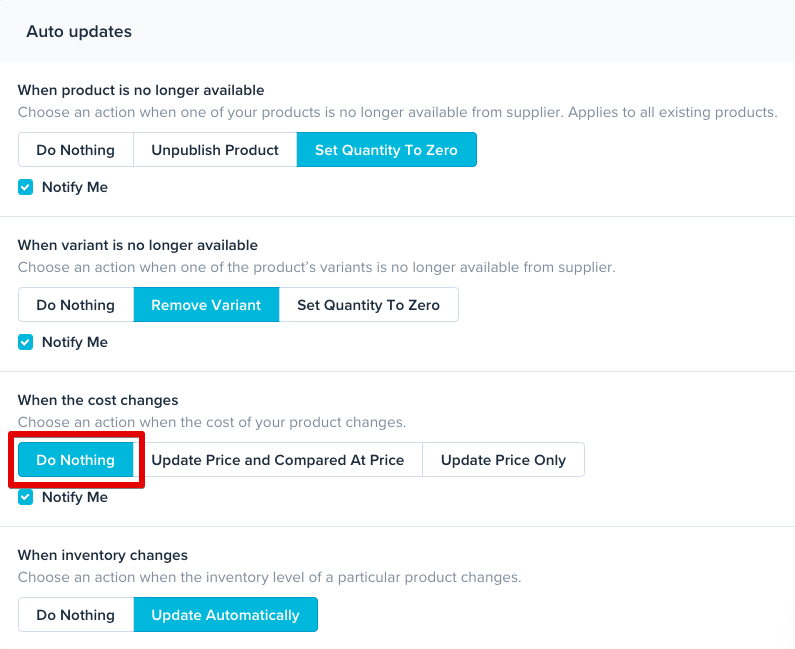
Make Sure You (Actually) Get Paid for Your First Sale

When you’re still hustling for your first sale, you’re often so fixed on making it happen that you’ll forget about some of the smaller details. Side-hustling dropshipper Karolis Rimkus shared the memorable f***up story behind his first sale.
When I first started my running store, I wasn’t sure which products would work. So I was going through runners’ forums, reading people’s concerns about their situation with bad shorts or terrible headbands and offering a suggestion on what to improve, sliding in my products here and there. It finally worked. But I was a total noob, and they paid through Shopify Payments, which were unavailable in my country. So Shopify actually refunded them the whole amount in a week. But it still counts as a sale, right?
| Pro Tip: Karolis made the mistake so you don’t have to. Find out if Shopify Payments is available in your country. |
What is the Facebook Data Really Telling You?

Data. The word inspires both fear and joy in the hearts of dropshippers. Know what to do with your data and you’ll be on an unstoppable path to success. Misunderstand or misinterpret your data and you’ll quickly find yourself in a situation as sticky as the one six-figure dropshipper Ryan Carroll ended up in.
My biggest dropshipping fail was just spending a lot of money on Facebook and not realizing that I was losing money every single day. I just wasn’t looking at the data correctly. I had spent probably about five grand over three months, thinking that I was making money but I wasn’t.
The key point you need to look at in Facebook is your cost per purchase. If your cost per purchase is way over the amount you’re selling the product for, you’re obviously losing money. So you need to make sure that your cost per purchase is under that, including the cost of goods.
I should have learned from my mistake early on, killed the ad sets and just moved on to a new product.
Don’t Try and Manage Stock Levels Yourself

Sales are great. We can agree on that. But what if you make a sale and you’re not even sure that you’ve got the product in stock? That’s the painful situation Nohealani Cutting from Modern Rustic Home found herself in during the early days of running her dropshipping store. Here’s what happened.
My biggest drop shipping f***up happened at the beginning, because I didn’t realize that I could pull and sync inventory from places like AliExpress. I was manually adjusting all my inventory from multiple sources and would have to scour their inventory feeds to see if any of my products were out of stock. Sometimes I would miss an item and customers would order something that was discontinued, and I had to cancel the order. Not only was it embarrassing, it was a terrible impression on the brand, and we probably lost a loyal customer that would have shopped again.
I remember spending hours late at night regularly checking every vendor’s website for the correct inventory counts and updating my inventory…it was extremely stressful and time consuming. Once I found services like DSers, it saved me dozens of hours per month and grief from customers. Now, with the time I spent doing that I can put it toward marketing and growing our customer base.
Make Sure Your Supplier Can Scale With You

Things were going great for Andreas and Alexander. Their pet supplies business was taking off, with more and more orders every day. They knew they were ready to take things big, and started to scale up their advertising spend. But as they ramped up, things came crumbling down. Soon they found themselves deep in the middle of a rather gruesome f***up.
It was hard to find a supplier that could handle this amount of orders per day. With the first supplier of our winning product, we had a lot of problems. He made a lot of mistakes, and really mixed up hundreds of orders. Every person got the wrong size, the wrong color, the wrong custom printing. Everything that could have been wrong was wrong.
This was already two and a half months ago that we changed to a new supplier, and today we still get emails from customers saying their order was wrong.
In the future I would never go to the supplier and order such a high amount. I would order small amounts like 10-50 pieces over one month, and if I see it is working. Only then I would order higher amounts. In the future, I would never order such high amounts all at once.
Thousands of Clicks Later…

Adam Greenspan is the man behind a seven-figure ecommerce powerhouse, Wallplates Warehouse. His products might be an unusual choice for a dropshipper, but his f***up feels like one that any of us could do. He spills the beans on when he made his biggest blunder.
A manufacturer discontinued a particular family of products, so I removed them from my store. Months later I realized that I was still paying for Google Ads for the discontinued products. Thousands of dollars later, I had learned a costly lesson. Now, I before I remove anything from my store, I check all my live ads before doing it.
Heads Up! Chinese New Year Is Coming.

In January 2019, things very going seriously well for Rodney and Kory. At the end of the month they’d generated an eye-watering $100,000 in revenue. They began amping up for an even bigger February, and that’s where the f***up came along.
We didn’t realize Chinese New Year was a thing where the suppliers all shut down and that there would be a month delay with sending orders. We were in Hawaii and we realized it and then we were like, “Oh my God…” We were doing 1,000 orders a day at this time.
We were swamped just trying to fulfill orders and emails customers every day for weeks. We still have nightmares of just with page on page of email of like, “Why isn’t my order shipped yet?”
After that we realized that there’s gotta be a better way to do this. So we started moving into higher ticket items within the industry and a lower sales volume in terms of number of order. Just because we couldn’t keep up. It was so brutal.
Too Much of a Good Thing on Holiday

Emma Reid is open about her f***ups. In fact, she dedicates her Instagram to sharing all parts of her dropshipping story, the good, the bad, and the facepalm moments. When I asked her to name her biggest f***up, she knew what it was immediately.
The time I took a week off and went to Bali, hands down. The universe must have wanted to teach me a lesson. Because the moment I landed, my ads started going bananas, and my sales were climbing to all-time highs. I was so unprepared for it. This was my first time scaling. I had no virtual assistant to answer the emails. So here I was sitting by the pool, Bintang beer in hand, trying to mash buttons on my laptop and fulfill all these orders. But it just wasn’t happening – the wifi was terrible and my laptop was one of those thinkbook bricks that looked straight out of the 90s.
Making $8,000 a day sounds great until you realize your system can’t handle it. I got so overwhelmed that I just deleted the Shopify app for the rest of the trip and pretended I didn’t have a business. Once I was home, the damages were assessed and I spent five mind-numbing days in clean up mode. It drove me insane, fulfilling all the orders one-by-one, and answering all those customers.
If I could go back, I’d tell myself to phone a friend or maybe borrow someone’s trained virtual assistant to handle it, or pay for my family to click the buttons. Hell, I’d even try to train my cat – that would be easy, he likes touching the keyboard already. Anything but doing it myself. Ideally though, I’d make sure the proper systems were in place before I even tried to scale. Lesson learned: Delegate before you accelerate.
Wrapping Things Up
Ahh, breathe a collective sigh with me as we recognize and move past some of these cringe-inducing f***ups. It’s kind of been like a group therapy session, huh?
Truth is, even as your business continues to grow and gain success, the f***ups don’t stop coming. What changes is the way you handle them. After all, we learn as much from our mistakes as we do from our successes.
With that in mind, let’s think of the f***up in a new light. It’s no longer going to be the thing that causes us to give up. Instead, we’ll see every new f***up as a fresh chance to stop, reflect, set yourself on a path to getting braver, better, and bigger.





